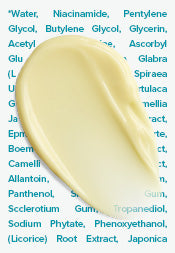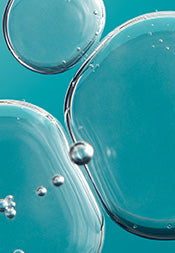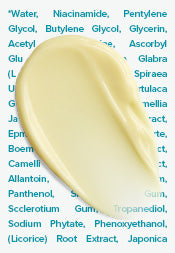Guide To Prebiotics For Skin
As we all know, prebiotics are beneficial bacteria for your gut; improved gut flora leads to better health and overall wellbeing. But did you also know that your skin is crawling with microorganisms – both good and bad – and that maintaining a balance between both is key to healthy and happy-looking skin? It’s not just prebiotics, but probiotics are good for the skin too. Both of which help restore balance to the skin microbiome and boost its barrier.
Prebiotics are an intriguing group of ingredients making skincare headlines because of the important role they can play in addressing a variety of skin concerns. Their gut-health benefits when consumed orally are well-established through research, and now emerging studies are shedding fascinating light on the benefits of prebiotics when applied to skin.
Although they sound rather similar, prebiotics and probiotics are two vastly different things, each with their own specific functions. Probiotics are defined as living microorganisms found naturally in your body, food, and supplements. When consumed or applied to the skin, probiotics offer the following positive benefits:
- Keep the surface of the skin — its first line of defence—balanced, younger-looking, and strong.
- Offset factors that lead to dry skin, redness, and a weakened surface.
- Ward off signs of ageing skin.
- Restore a healthy microbiome balance (good bacteria).
On the other hand, prebiotics are not alive. Instead, they are non-digestible ingredients that help to balance out the good and bad bacteria on the skin. In short, prebiotics are essentially foods consumed by probiotics. Experts around the world consider probiotics fundamental to being healthy and youthful, and since prebiotics are the natural partner to probiotics, having both gives you the best of both worlds. As it turns out, the benefits of prebiotics and probiotics in our gut are also apparent when these ingredients are applied to the skin. When combined together, whether that be in topical skincare products or in foods, they become a compound known as synbiotics. Some common synbiotics include additives, supplements, as well as certain foods like yoghurt and cheese.
What prebiotic ingredients should I look for in skincare?
Look for skincare products with prebiotic plant sugars, such as xylitol, rhamnose, and a large group of ingredients known as fructooligosaccharides (including those found in berries). Glucomannan is a particularly interesting prebiotic due to the way it works with a wide range of probiotics that help control acne.
Foods with prebiotics include garlic, onions, oats, barley, wheat bran, asparagus, bananas, and flaxseed, as well as a plant fibre known as Inulin, found in chicory root. Some of these plant extracts or their derivatives are also included in skincare products, where you can easily reap the benefits of applying prebiotics to the skin.
Serums or moisturizers with prebiotics such as these may already be in your routine, so be sure to check your ingredient labels.
Who can benefit from using prebiotics for skin?
A stable, balanced microbiome is a basic need of everybody’s skin. If your skin isn’t looking and feeling as healthy and fresh as it used to, there’s a good chance your microbiome could be unbalanced. As such, everyone can benefit from the valuable support prebiotics provide for the skin, especially those with a compromised skin barrier or skin sensitivity. Prebiotics are also suitable for acne-prone skin, and many of them offer dual purpose as naturally hydrating ingredients for skin.
In short, prebiotic skincare products offer multiple benefits for people with various skin conditions and complexions.
Important considerations when purchasing prebiotic skincare
Since light and exposure to air can spoil the effectiveness of the overall formula, it’s important that your prebiotic skincare comes in stable packaging – opt for opaque, air-tight bottles. You should also look for prebiotics in a fragrance-free formula to ensure optimal soothing effects.
The bottom line: A combination of prebiotics and probiotics in your skincare will deliver the best results, ensuring skin has what it needs to keep its barrier intact, smooth, and healthy-looking.
Learn more about skincare ingredients and general skincare tips.
References for this information:
Foods, March 2019, ePublication
Beneficial Microbes, June 2014, pages 99-107
Nature Reviews Microbiology, March 2018, pages 144-155
Fermentation, May 2019, pages 1-17
Journal of Zhejiang University Science B, July 2018, pages 505-514
Microorganisms, December 2020, pages 1–14
Probiotics and Antimicrobial Proteins, August 2021, ePublication
Recommended Products
Water Infusing Electrolyte Moisturizer
Hyaluronic Acid Booster












